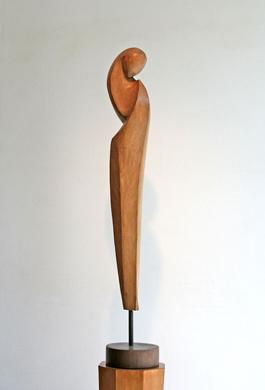This exhibition brings together artists whose work explores the possibilities opened up by the Cubist's removal of the restriction to a single viewpoint perspective compositional structure which had been convention in Western art since the Renaissance.
Following the initial impact of Cubism between 1907-1914, André Lhote was the first artist to apply Cubism to landscape, having become frustrated with the excessively theoretical path the movement was taking, and went on to set up his own academy which influenced a generation of artists. The exhibition includes his painting “Sur la Terrasse” which was exihibited at the Venice Biennale in 1954.
Similarly artists such as the Hungarians Robert Bereny and Etienne Beothy recognized the liberating opportunity to arrange their compositions in a distorted manner to create emphasis and intrigue. Bereny was a member of the “Group of Eight” and the “Gresham Circle”; his poster design “To Arms!” became one of the main symbols of the Hungarian revolution. We are delighted to include a major Cubistic work by him “Nature Morte” painted c.1928. Beothy initially trained as an architect and was a member of the avant-garde “MA” group with Moholy-Nagy, before moving to Paris where he exhibited at Leonce Rosenberg’s famous gallery “L’Effort Moderne”. His bronze relief “Opus 17 - Femme 1”, is a famous example of is work from this period.
Other artist’s such as André Beaudin and Léon Gischia evolved towards a flatter composition, eliminating any sense of depth, allowing the stylised forms and vibrant colours to compete for dominance with the subject matter. Meanwhile Russian artists Serge Charchoune and Youla Chapoval pushed the Cubist principle to the brink of abstraction, a destination which would become the inevitable conclusion for many Post-Cubist artists, after a diverse range of revolutionary journeys, that we hope to reflect in this exhibition.
"A rare and beautiful exhibition..." - Studio International.

